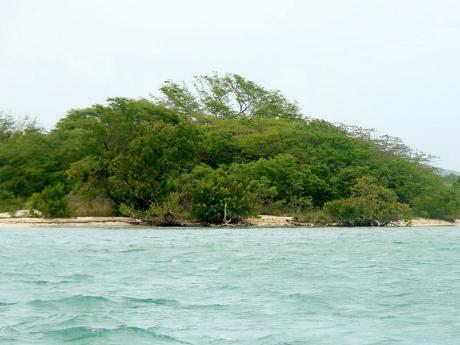Goat Islands already being destroyed, says researcher - Dynamite-fishing and natural deforestation damaging proposed logistics hub base
Christopher Thomas, Gleaner Writer
WESTERN BUREAU:
Director of the University of the West Indies' Mona Geoinformatics Institute, Dr Parris Lyew-Ayee Jr, has scolded environmentalists for opposing the logistics hub proposed for the Goat Islands while ignoring natural environmental destruction and dynamite-fishing in that area.
There has been much outcry from environmental lobbyists since Jamaica began collaborating with Chinese investors to build the US$1.5-billion trans-shipment hub in the Goat Islands, which the Chinese government had selected as the base for the project.
The lobbyists have cited the potential destruction of marine and other life forms, including protected species, in the Portland Bight area as the reason for their opposition to construction of the logistics hub at Goat Islands.
But in a recent interview with The Gleaner, Lyew-Ayee said: "In the case of the Goat Islands, the mangroves that the environmentalists are saying the development (of the logistics hub) is going to destroy, they are already being destroyed."
Supporting that claim, he continued, "You have fishermen dynamiting the place already, and natural deforestation occurs when you have hypersaline conditions occurring."
He said, when the salt water evaporates, leaving salt behind, the mangroves die when they can't take the excess salt.
The researcher added that waste by-products from agricultural pursuits are contributing to environmental damage to the Goat Islands.
"You have a lot of fertiliser run-off coming from the sugar estates or the agricultural fields in the vicinity, washing down into the rivers and emptying out into the Galleon Harbour," said Lyew-Ayee. "All of that is going on now, and nobody has started to put a shovel to the ground with respect to the hub, but deforestation is going on now … . If you are going to fight the development of the Goat Islands, be fair all around."
DEVELOPMENT COULD IMPROVE AREA
Lyew-Ayee also said that carefully monitored development could actually improve the ecological system in the area, and in making that assertion, compared the Goat Islands project with the Montego Bay Freeport harbour and land development in 1967, which required the clearing of 300 acres of mangroves.
"Mangroves provide natural shoreline protection, and they're also a natural fishery for baby fish; with respect to the destruction (during Freeport's construction), development inevitably leads to destruction, but if you create artificial breakwaters and those kinds of structures, they would provide artificial protection to the shoreline, the same or better than the mangroves would," said Lyew-Ayee.
"The Portland Bight, just like Montego Bay, is part of a marine protected area. What this means is that the obligation and onus is on any developer in this area to have a greater level of awareness of scrutiny," the researcher added.
Outreach officer at the Montego Bay Marine Park, Joshua Bailey, acknowledged that the removal of the mangroves for Freeport's construction weakened Montego Bay's ability to withstand storms. However, he said that, in spite of this, the city has remained protected over the years.
"We are just as susceptible to storms as anywhere else. However, our ability to be defended, or how well our city would respond to a storm, is greatly hampered by many things … speaking specifically to the mangroves (in Freeport). It did deal a serious blow to our environmental strength, in that there is not as much coverage," said Bailey.
"However, we still have the Bogue Lagoon, which is a protected area and which is used by many of the individuals who have boats nowadays as a shelter, and Montego Bay, in its history, has been a relatively safe harbour, in that many boat owners would carry their boats to the lagoon in case of a storm," Bailey added.
The Montego Bay Freeport has created more than 100,000 jobs in the Second City.


